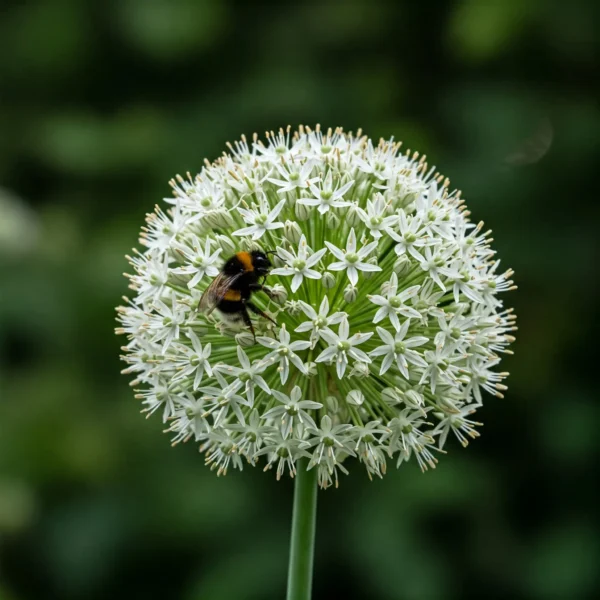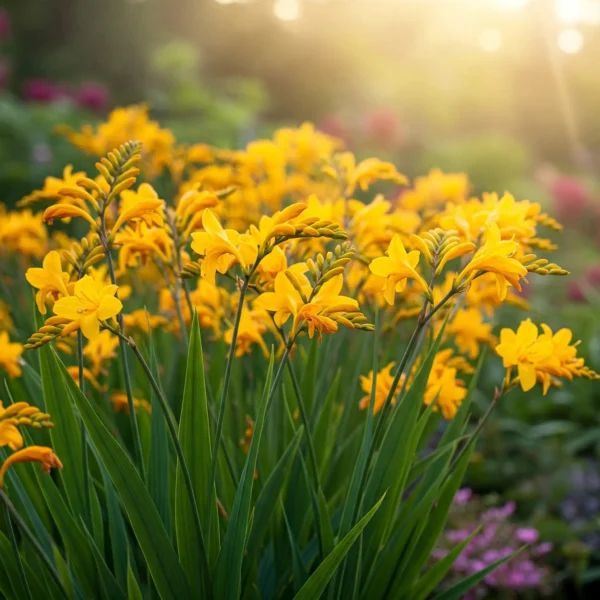Agastache ‘Blue Boa’ – Hummingbird Mint
Often known as Hummingbird Mint, Agastache ‘Blue Boa’ is a gorgeous perennial prized for its vivid, violet-blue flower spikes and ability to draw pollinators including hummingbirds, bees, and butterflies. A hybrid with outstanding showiness, long bloom time, and rather low maintenance needs is this flowering plant. This guide guarantees that you have all the knowledge you need to properly grow Agastache “Blue Boa,” so offering thorough information on care, propagation, design applications, and problem-solving.
Botanical Taxonomy and Descriptive Notes
Agastache “Blue Boa” is a hybrid cultivar of the Agastache genus from the mint family (Lamiaceae). Combining the most features of both parent species, it is thought to be a cross between Agastache rugosa and Agastache foeniculum. Originally from North America and parts of Asia, Agastache species are usually distinguished by their aromatic foliage and showy floral spikes. Dense, upright habit, lance-shaped, toothed leaves, and amazing, long-lasting blooms define “Blue Boa”.
Detailed Plant Information Table
| Feature | Description |
| Common Name | Hummingbird Mint, Blue Boa Hyssop, Anise Hyssop |
| Scientific Name | Agastache ‘Blue Boa’ |
| Plant Type | Herbaceous Perennial |
| Mature Size | 18-24 inches tall, 12-18 inches wide |
| Growth Rate | Moderate to Fast |
| Sun Exposure | Full Sun (at least 6 hours of direct sunlight per day) |
| Soil Type | Well-drained, moderately fertile soil. Tolerates a wide range of soil types, including sandy and clay. |
| Soil pH | Slightly acidic to neutral (6.0-7.5) |
| Hardiness Zones | USDA Zones 5-9 |
| Flower Color | Violet-Blue |
| Bloom Time | Summer to early fall (typically June to September) |
| Foliage Color | Green |
| Special Features | Attracts pollinators (hummingbirds, bees, butterflies), deer resistant, drought tolerant, fragrant foliage |
| Toxicity | Non-toxic to humans and pets. |
Agastache ‘Blue Boa’ Grows Best in Garden Beds and Borders
- Mid-border plantings would benefit much from its vivid color and straight habit.
- Pollinator gardens draw hummingbirds and helpful insects.
- Large pots will allow you to successfully grow containers that will liven balconies and patios.
- Though they are mostly grown for their decorative appeal, herb gardens can be used in teas thanks to their subtly anise scent.
- Because of its drought tolerance, xeriscaping is appropriate for water-wise settings.
Best Growing Conditions for Agastache ‘Blue Boa’
Light Needs
Agastache ‘Blue Boa’ calls for full sun for best flowering and growth. This translates to at least six hours of direct sunlight daily. Although the plant can withstand some partial shade, flowering will be lessened and legging may result.
Needs for Soil
Agastache “Blue Boa” depends critically on well-drained soil. Though it can tolerate a range of soil types, including sandy, loamy, and even clay soils, provided there is good drainage it prefers rather fertile soil. Root rot can result from very heavy, watery soil. The perfect pH for soil is between 6.0 and 7.5—slightly acidic to neutral.
Watering Requirement
Agastache ‘Blue Boa’ is rather drought-tolerant once grown. Deeply and consistently water during the first growing season to build a strong root system. Following that, water when the top inch of ground feels dry to the touch. Steer clear of overwatering since this is a common source of problems.
Relative Humidity and Temperature
Agastache “Blue Boa” does best in warm, dry conditions. In USDA Zones 5-9 it is hardy; it prefers modest humidity and can withstand hot summers, particularly if given enough drainage.
Boosting
Agastache “Blue Boa” generally does not call for strong fertilization. Actually, over-fertilizing can cause too much foliage to grow at the price of flowers. Should your soil be poor, you can correct it at planting by adding compost. Though it’s not usually necessary, a light application of a balanced, slow-release fertilizer in early spring may also be helpful.
Techniques for Agastache “Blue Boa” Seed Propagation
- Start seeds indoors six to eight weeks before the last expected frost.
- Plant seeds on the top surface of a seed-starting mix that drains well. The seeds need light to germinate, thus do not cover them.
- Keep the ground warm and moist—about 70°F.
- Usually, germination falls between 14 and 21 days.
- After a few sets of true leaves, move seedlings into separate pots.
- After the threat of frost has passed, harden off the seedlings before moving them outside.
Cutting Propagation
- Get stem cuttings either in early summer or late spring. Select robust, non-flowering stems.
- Just below a node, where a leaf joins the stem, cut 4-6 inch cuttings.
- Eliminate the lower leaves, keeping a few at the top.
- Optionally, but it will increase success rates, dip the cut end in rooting hormone.
- Plant the cuttings in a well-draining rooting media, such perlite or a mix of perlite and peat moss.
- Keep the cuttings moist and in a bright, indirect light environment; roots should grow within a few weeks.
- Once rooted, move the cuttings into separate pots and progressively expose them to outside conditions.
Division (Should Relevant):
- Divide existing plants either in early spring or late fall.
- Carefully excavate the complete plant.
- Cut the root ball into smaller pieces with a sharp knife or spade such that every section boasts multiple healthy roots and shoots.
- Replant the divisions exactly at the same depth they were growing before.
- Water carefully.
Note: Usually Agastache is propagated using layering and air layering not used for Agastache.
Ideas for Design and Companion Plants
Applied Landscape Design
A flexible plant fit for many garden designs, agastache ‘Blue Boa’ can be used:
- Village Gardens: Its informal style and vivid blossoms fit very nicely with other cottage garden favorites.
- Modern Gardens: Its clear form and arresting color give a modern touch.
- Attracting pollinators calls for a must-have in wildlife gardens.
- For rock gardens, its drought tolerance and inclination for well-drained soil make it a good fit.
Gardening in Containers
Especially for those with limited space, growing agastache “blue boa” in containers is a great alternative. Select a pot featuring drainage holes and at least 12-inch diameter. Potting mix with good drainage. Find a sunny spot for the container.
Accompanied Plants
Agastache “Blue Boa” complements many different kinds of other plants, including:
- Echinacea, or conelowers: Their different flower forms and similar sun/soil needs combine perfectly.
- Russian Sage (Perovskia atriplicifolia): ‘Blue Boa’ is exquisitely complemented by the silvery foliage and blue flowers of Russian Sage.
- Black-eyed susans, or Rudbeckia, have a striking contrast with their yellow and gold blossoms.
- Succulents with interesting textural contrast and similar growing needs include sedum.
- Ornamental Grasses: ‘Blue Boa’s bold blossoms find a soft background from grasses like Panicum virgatum (switchgrass) or Schizachyrium scoparium (little bluestem).
Typical Issues and Resolutions
Identification and Management of Pests
Usually resistant to pests, Agastache ‘Blue Boa’ Still, it may sometimes be influenced by:
- Aphid: Strong blast of water or insecticidal soap can help to control these little, sap-sucking insects.
- These microscopic insects called spider mites prefer hot, dry environments. Raise humidity then apply horticultural oil or insecticidal soap.
Preventive Treatment and Disease Management
Usually resulting from overwatering or poorly drained soil, root rot is the most often occurring disease afflicting Agastache. To stop this, guarantee good drainage and steer clear of overwatering. Sometimes, particularly in humid conditions, powdery mildew can strike. If needed, use a fungicide and boost air circulation.
Typical Expanding Problems
Overwatering, underwatering, nutrient deficits, or poor drainage can all lead to yellowing leaves. Evaluate the developing situation and modify as necessary.
- Stunted Growth: Nutrient shortages, inadequate sunlight, or poor soil could all be causes.
- Usually lacking enough sunlight, leggy growth results.
The Ideal Season for Purchase of Agastache ‘Blue Boa’ Plants is Either Spring or Early Summer.
This allows the plants plenty of time to establish themselves before winter’s cold or summer’s heat.
Bare Root Against Container Plants:
- As long as the ground isn’t frozen, easily available container plants can be placed all during the growing season. This offers right size and flowers right away.
- Sometimes early spring brings bare-root plants. Usually less costly, they may need more careful planting and watering to establish.
If you intend to start Agastache ‘Blue Boa’ from seeds, buy winter seeds to start indoors 6-8 weeks before the last expected frost.









